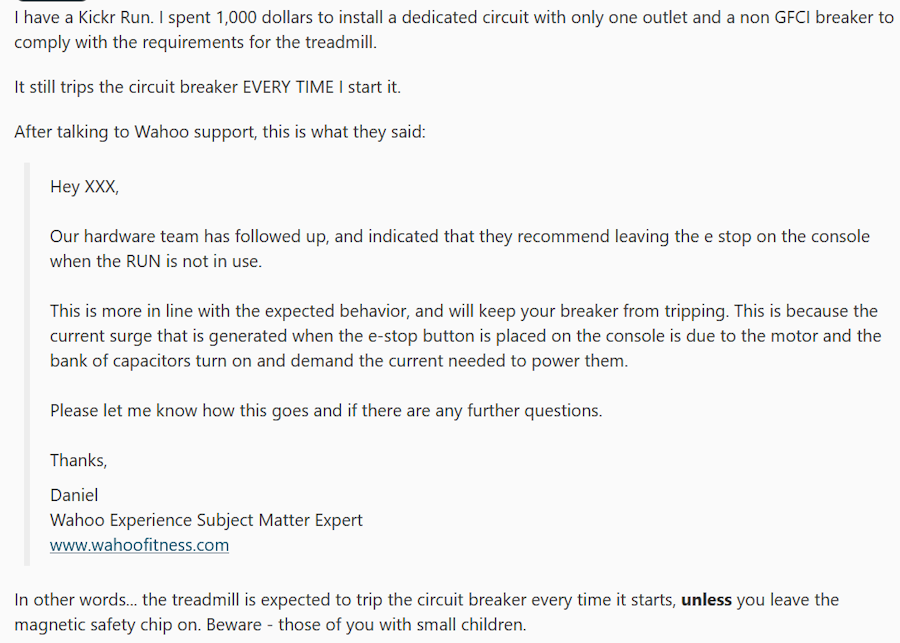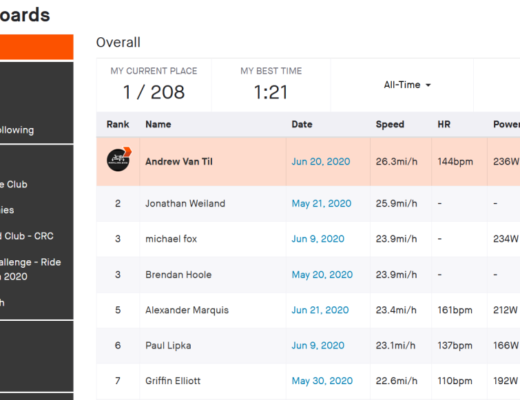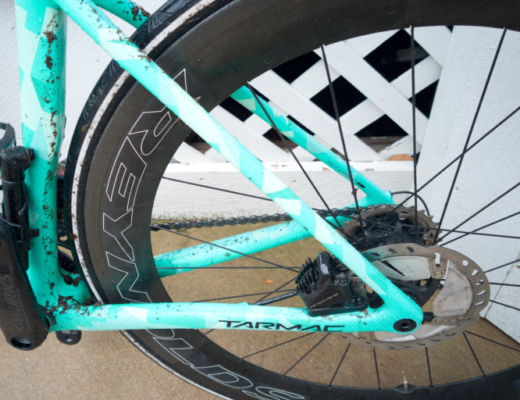If we check the requirements that Wahoo posts for the Wahoo Run… They are hefty, and particular… But, the Run is a beast, so it makes sense that it would require a dedicated circuit. The problem is that the Wahoo Run doesn’t respect its own rules, and by doing so creates a massive safety issue.
I ran across a post on Reddit last night where the OP had a dedicated 20A (yeah, 20A) circuit put in, but every time they start up the Wahoo Run, it flips the breaker. That is a crazy amount of power. The craziest thing is that Wahoo support seems to believe that is totally OK.

For the record. That is not OK. Very, very much not OK.
It is a massive safety issue, as well as being a massive inconvenience for users of this $5,000. The safety concern is much larger. Nothing you plug into the wall should, as a part of its design, pull more electricity than the maximum allowed on the circuit – that’s a great way to start a fire. Electrical devices cannot expect the safety equipment to function properly. If the breaker doesn’t trip (or the user has modified it to “work around” this problem…), eventually the wire will get hot and bad things will happen. For 15A, that’s 1,800W peak, and 1,440W (80% rule) continuous. That the Run is flipping a 20A breaker, means it’s trying to pull more than 2,400W.
It also provides insight into how Wahoo is able to deliver the HP numbers they are claiming (by pre-charging capacitors) off a 15/20A circuit. Fortunately, that probably means that this is a fixable problem as long as the pre-charging routine is controlled by the firmware. Here’s hoping that it is. $5,000 is a lot to spend on a device that risks the safety of your home and introduces massive UX problems.



